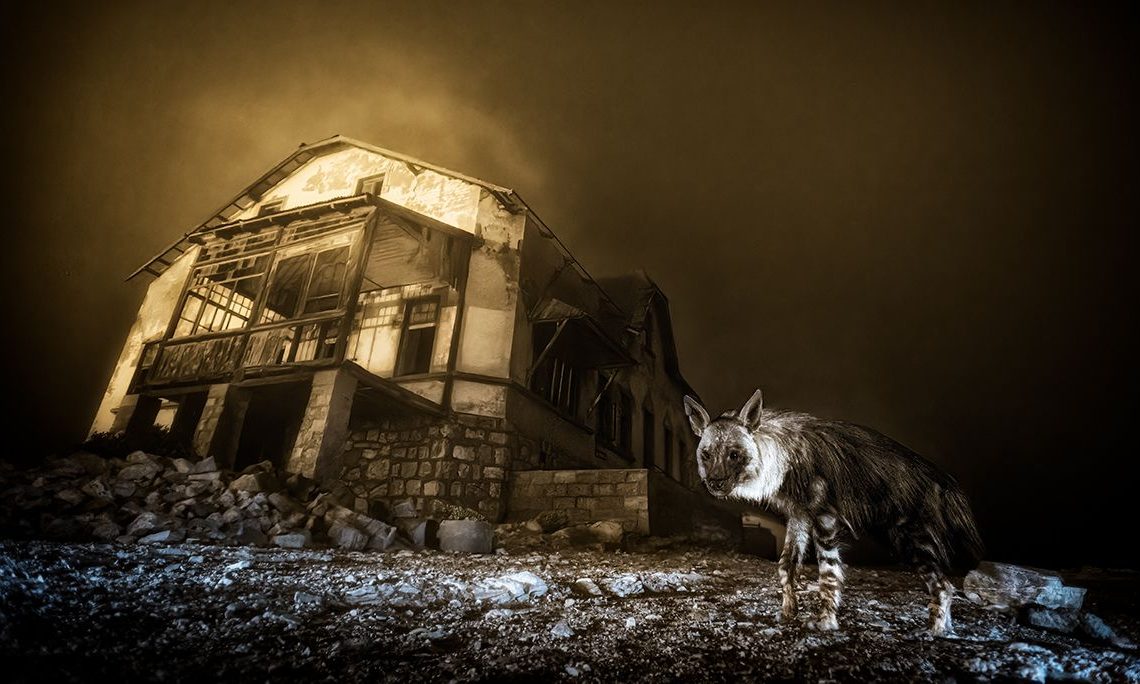
The winners of the sixty-first Wildlife Photographer of the Year competition have been revealed, offering us a vivid glimpse into the wild from every corner of the planet.
Submissions for the sixty-second Wildlife Photographer of the Year competition will open at 11:30 AM GMT on Monday, 20 October 2025.
Wildlife Photographer of the Year is developed and produced by the Natural History Museum, London, and this year’s competition attracted a record-breaking 60,636 entries from 113 countries. From this extensive selection, 19 category winners and overall titleholders were chosen, recognizing photography that combines compelling storytelling with technical excellence.
The prestigious Wildlife Photographer of the Year 2025 title was awarded to Wim van den Heever for the photograph Ghost Town Visitor. Wim’s photo captures the world’s rarest hyena moving through Kolmanskop’s abandoned ruins – a quiet meeting of wilderness and decay, years in the making with patient camera trap work.
Akanksha Sood Singh, says: “This image is an eerie juxtaposition of the wild reclaiming human civilisation. The image is haunting yet mesmerising because the solitary hyena takes centre stage as a symbol of resilience amid the decay. This picture is a multi-layered story of loss, resilience and the natural world’s silent triumph, making it an unforgettable piece of wildlife and conservation photography.”
If you want to explore more winning imagery, visit the Natural History Museum website. And if you’re in London, don’t miss the chance to experience the images in person – the annual Wildlife Photographer of the Year exhibition opens at the Natural History Museum on 17 October 2025 and runs through 12 July 2026.
AWARDED IMAGES
Wildlife Photographer of the Year
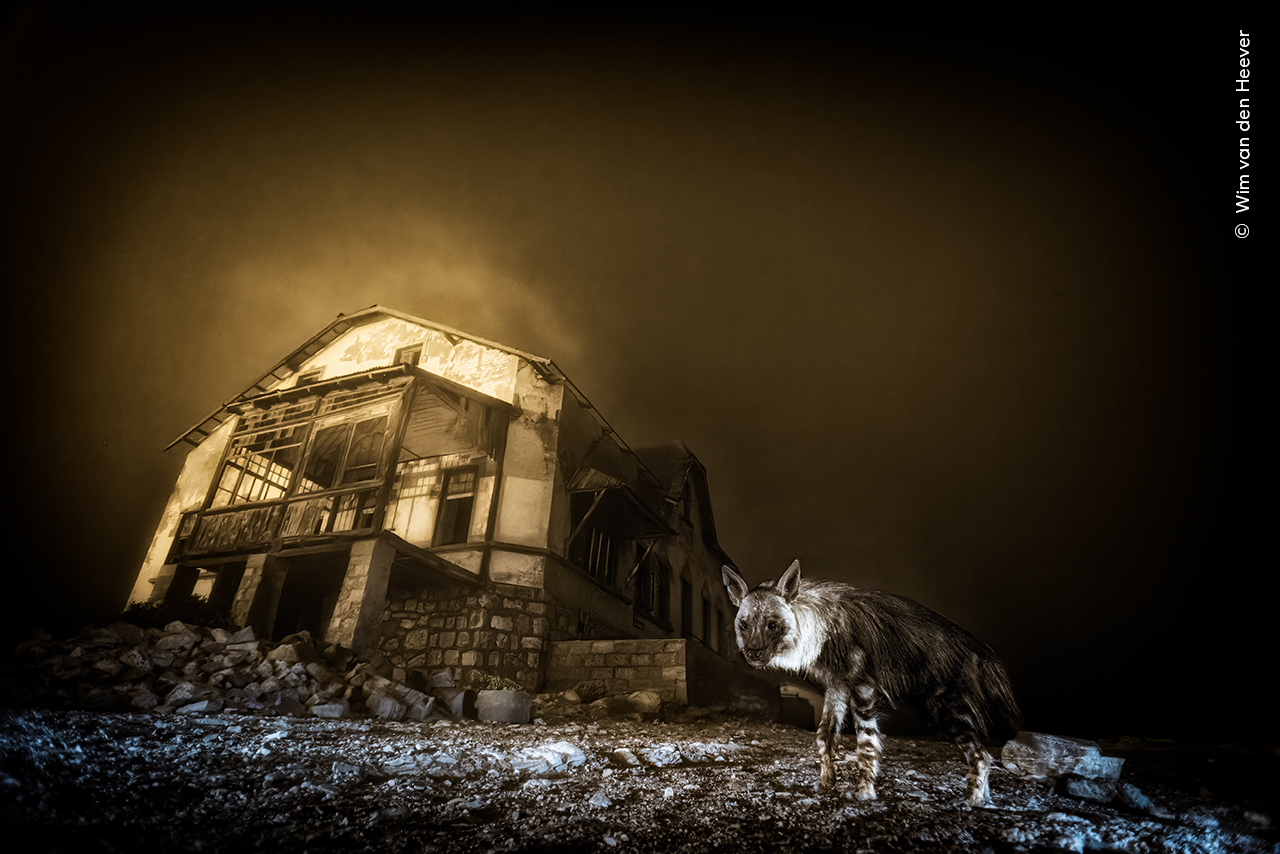
Ghost Town Visitor by Wim van den Heever, South Africa
Winner, Urban Wildlife Wildlife Photographer of the Year 2025
Technical details: Nikon D810 + 17–35mm f/2.8 lens at 17mm; 15 at f/2.8; ISO 3200; 2x Nikon SB-800 Speedlight flashes; Camtraptions motion sensor
With sea fog rolling in from the Atlantic Ocean, Wim chose this spot for his camera trap after noticing hyena tracks nearby. ‘It took me 10 years to finally get this one single image of a brown hyena, in the most perfect frame imaginable.’ The rarest hyena species in the world, brown hyenas are nocturnal and mostly solitary. They are known to pass through Kolmanskop on their way to hunt Cape fur seal pups or scavenge for carrion washed ashore along the Namib Desert coast.
Young Wildlife Photographer of the Year
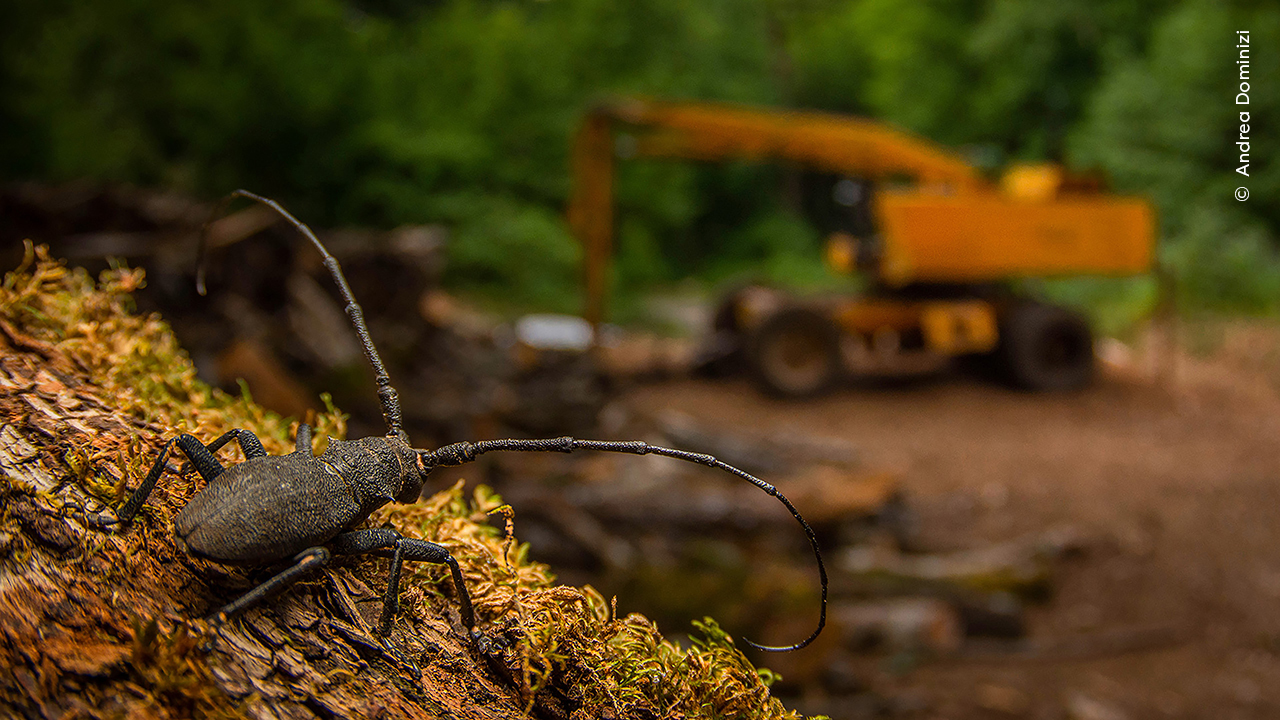
After the Destruction by Andrea Dominizi, Italy
Winner, 15 – 17 Years, Young Wildlife Photographer of the Year 2025
Technical details: Nikon D7100 + Tokina 10–17mm f/3.5–4.5 fisheye lens at 17mm; 1/80 at f/8; ISO 400; Godox TT350 off-camera flash and diffuser
Andrea Dominizi (Italy) finds a longhorn beetle – a forest sentinel observing an intruder. Using a wide-angle lens and off-camera flash, he framed the beetle against abandoned machinery. Andrea’s photograph tells a poignant story of habitat loss. As longhorn beetles tunnel into dead wood, fungi make their way inside, helping to break it down and recycle nutrients. If the beetles’ habitat is disturbed or destroyed, the effects ripple across the entire ecosystem.
Impact Award
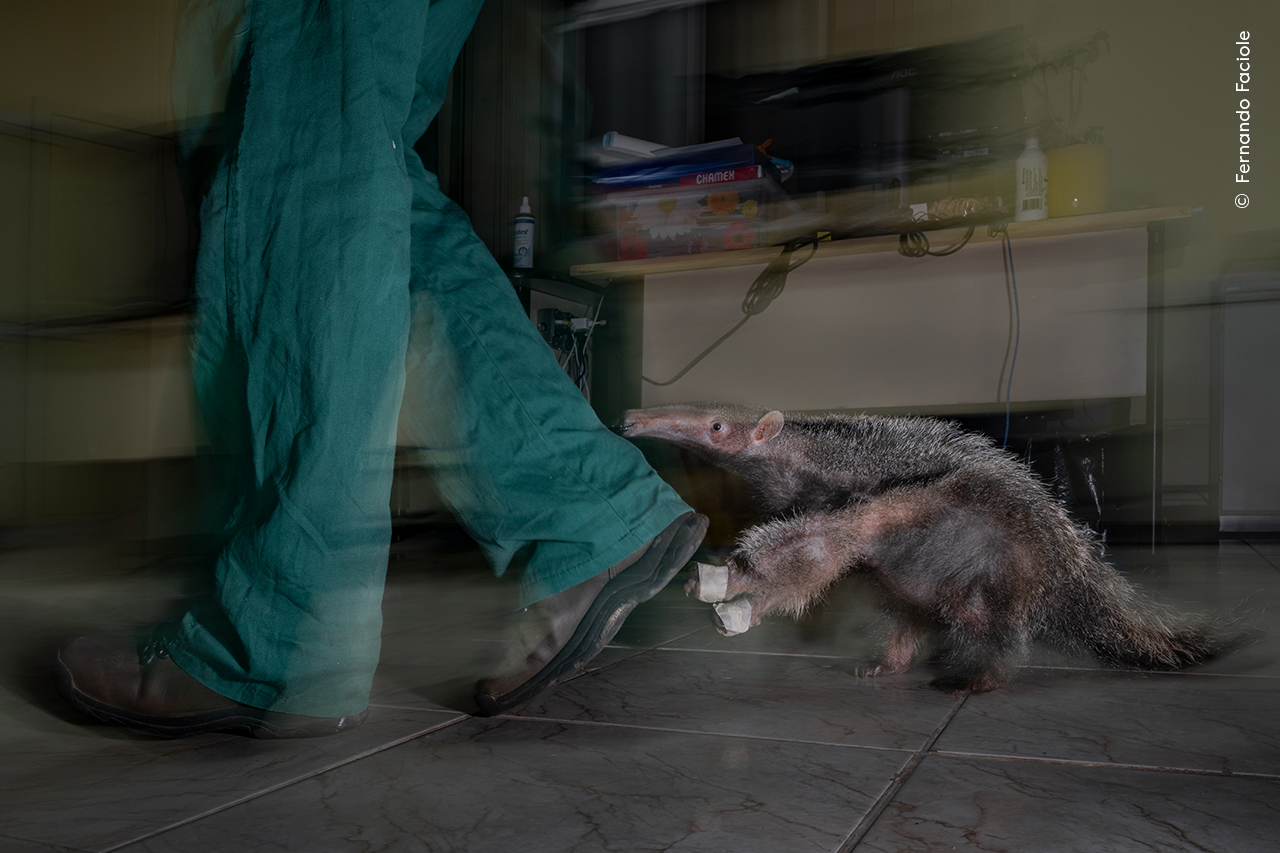
Orphan of the Road by Fernando Faciole, Brazil
Highly Commended, Photojournalism, Impact Award Winner 2025
Technical details: Nikon D850 + 24–70mm f/2.8 lens at 28mm; 0.8 at f/22; ISO 31; Nikon Speedlight flash with Greica CT-16 transmitter/receiver
Fernando wanted to highlight the consequences of road collisions, a leading cause of the decline in giant anteater numbers in Brazil. This pup’s mother was killed by a vehicle, and the hope is that it will be released back into the wild after being encouraged to develop crucial survival skills by its caregiver.
Alongside rehabilitation centres, the Anteaters and Highways project of the Wild Animal Conservation Institute is developing strategies to reduce anteater deaths on Brazil’s roads. These include erecting fences and building underground tunnels to allow the anteaters to cross safely.
Category Winner: Natural Artistry
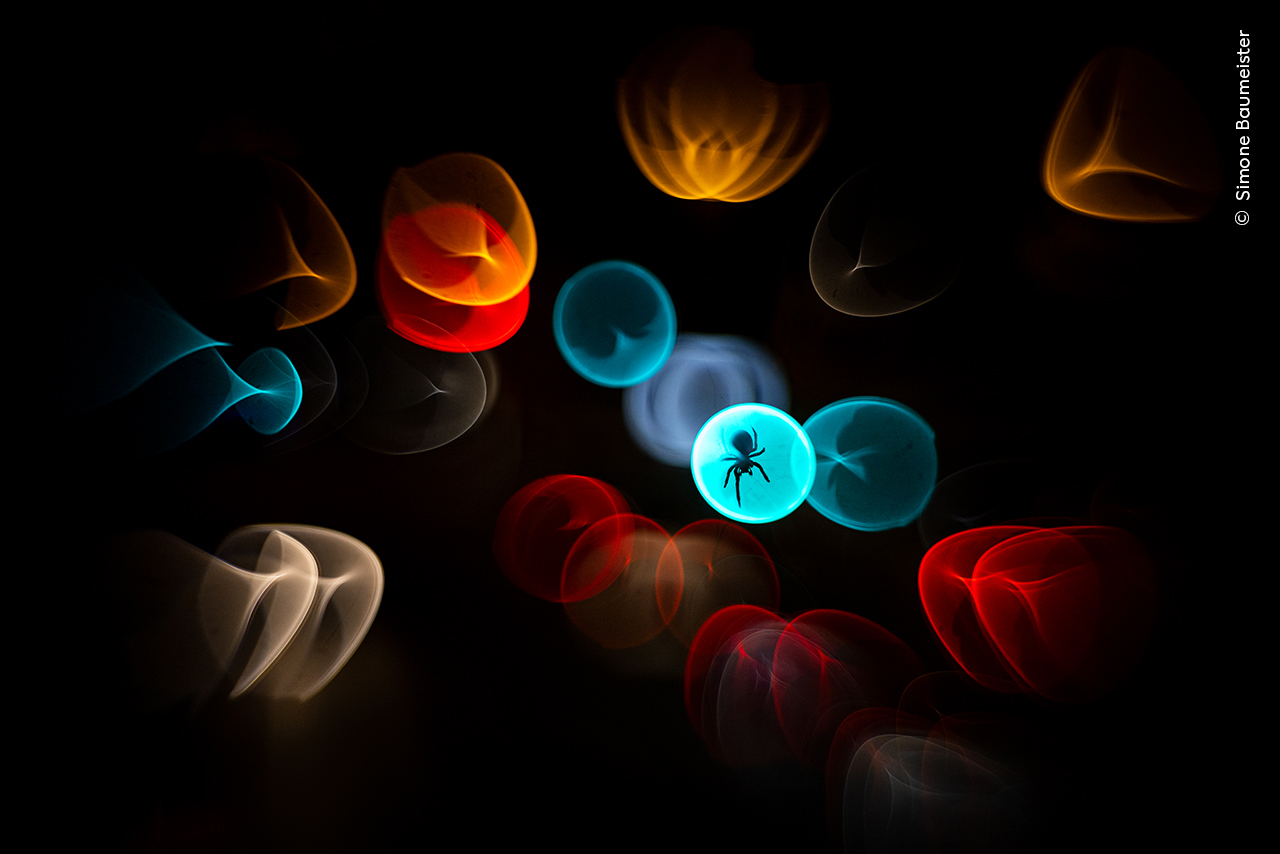
Caught in the Headlights by Simone Baumeister, Germany
Technical details: Canon EOS R5 + Carl Zeiss Jena Pancolar 50mm f1/.8 lens + 16mm extension tube; 1/250 at f/2.8 (-1.33 e/v); ISO 1250
Simone Baumeister (Germany) shows an orb weaver spider on its web on a pedestrian bridge, silhouetted by lights from the cars below. To achieve this kaleidoscopic effect, Simone reversed one of the six glass elements in an analogue lens. This distorted the image at the edges while leaving the centre sharply focused. She then cropped the picture to move the spider slightly off-centre.
Category Winner: Behaviour – Mammals
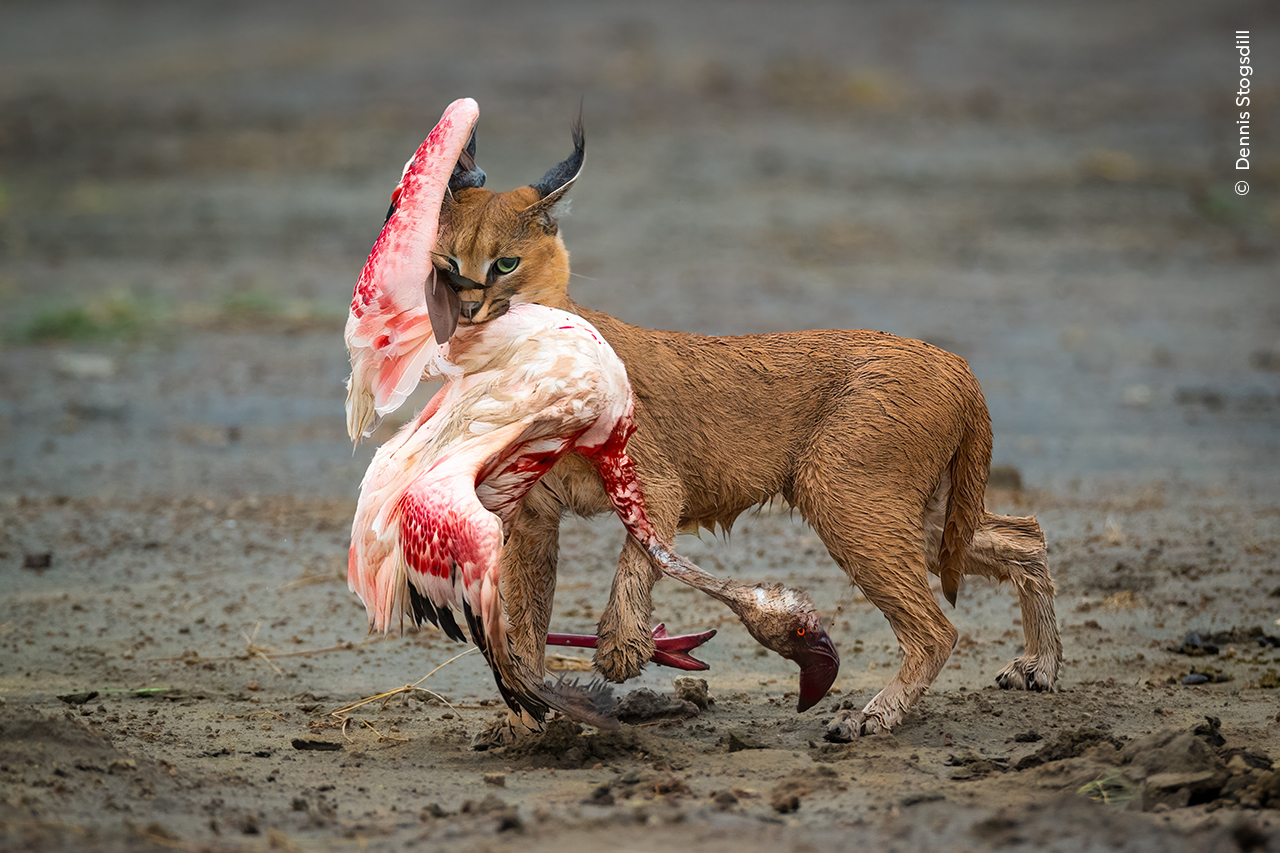
Cat Amongst the Flamingos by Dennis Stogsdill, USA
Technical details: Canon EOS-1D X Mark II + 600mm f/4 lens; 1/1600 at f/5.6; ISO 2500
Dennis had been keeping an eye out for wild cats such as servals for several days when a call came over the radio: one had been seen at Ndutu Lake. But it wasn’t a serval. It was a caracal, successfully hunting wading lesser flamingos. Caracals have a varied diet, from insects to antelope, and are renowned for the acrobatic leaps they make to snatch birds from the air. But there are few, if any, records of them hunting flamingos.
Author: Kim Bunermann
Source: DigitalCameraWorld
Reviewed By: Editorial Team



